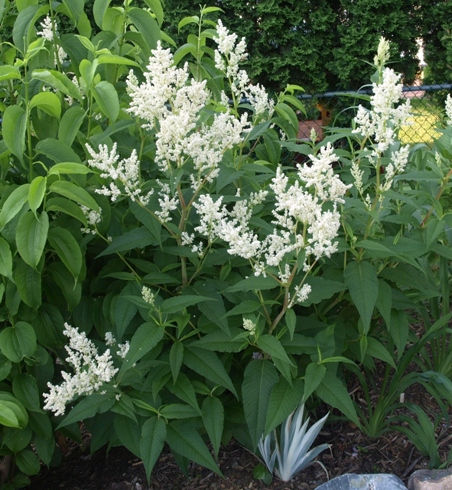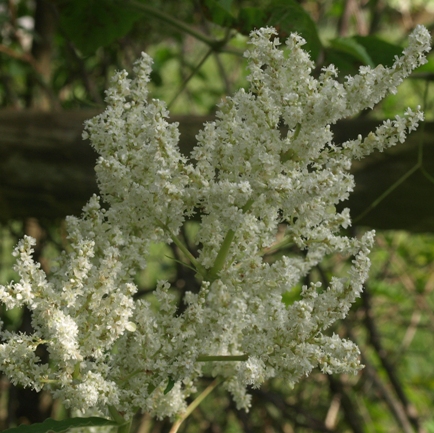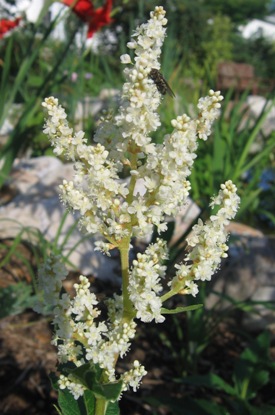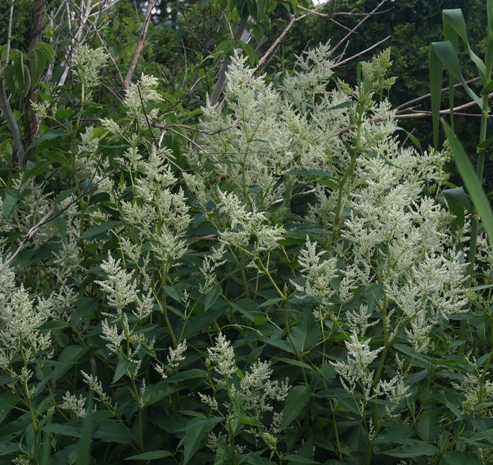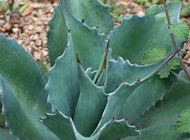 |
Persicaria polymorpha |
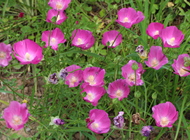 |
| Synonym(s) |
Polygonum polymorphum |
| Common name |
giant fleeceflower; white dragon |
| Family |
polygonaceae |
| Life cycle |
perennial |
| Flowers |
white (May-June) |
| Size |
6' |
| Light |
sun-part shade |
| Cultural notes |
prefers moist soil |
Clumping upright perennial with white flower plumes. I received this one in a generous plant trade by mail. It bloomed a bit that same year, but has since come into its own in the garden, growing into a voluminous mound. A typical polygonum, foliagewise, but the only white-flowered one in our garden. Makes a statement from afar.
I like how this plant was described in an article about the garden of fellow Dutchman Henk Gerritsen, who describes the color progression of the flowers from white to brown, and comments on "the fascinating ruin into which it collapses in winter, providing a perfect shelter for a host of insects and birds".
|
It has grown to a huge shrub-like mound behind our big pond's filtration zone – I have to stand far back to take the whole thing in with my camera! The base of the plant, from which it returns every spring, is impressive as well: a woody structure at least 4 inches thick, just above soil level. I hope ours lasts a long time, because it's just the right plant for that space.
|
We left this plant behind in our Pennsylvania garden (and wish it well); we don't grow it in Houston. One or more images of this plant are included in my stock photo catalog About my plant portraits
PlantLinks to other web pages about Persicaria polymorpha
Visitors to this page have left the following comments| kathleen dixon | Oct 16, 2009 | We have a similar plant to your persicaria/polygonaceae at the edge of the forest, most likely planted by the late landscape architect Wallace (Mack) Ruff who lived in Oregon and New Guinea. It has not spread far in the 40 years we have lived here. The City has lumped it in with the noxious variety and is coming soon to eradicate it. Is your variety clumping or do you believe all varieties spread uncontrollably? We love the plant because of its' history and placement. Thank you
We haven't had ours nearly as long as yours, but in the few years it's been around, it has not spread significantly by roots, and has not made any seedling offspring. What a pity if you would lose yours - I hope you can successfully petition! |
I welcome comments about my web pages; feel free to use the form below to
leave feedback about this particular page. For the benefit of other visitors
to these pages, I will list any relevant comments you leave, and if
appropriate, I will update my page to correct mis-information. Faced with an
ever-increasing onslaught of spam, I'm forced to discard any comments including
html markups. Please submit your comment as plain text. If you have a
comment about the website as a whole, please leave it in my
guestbook. If you
have a question that needs a personal response, please
e-mail me.
Last modified:
June 06, 2015
Contact me
|


